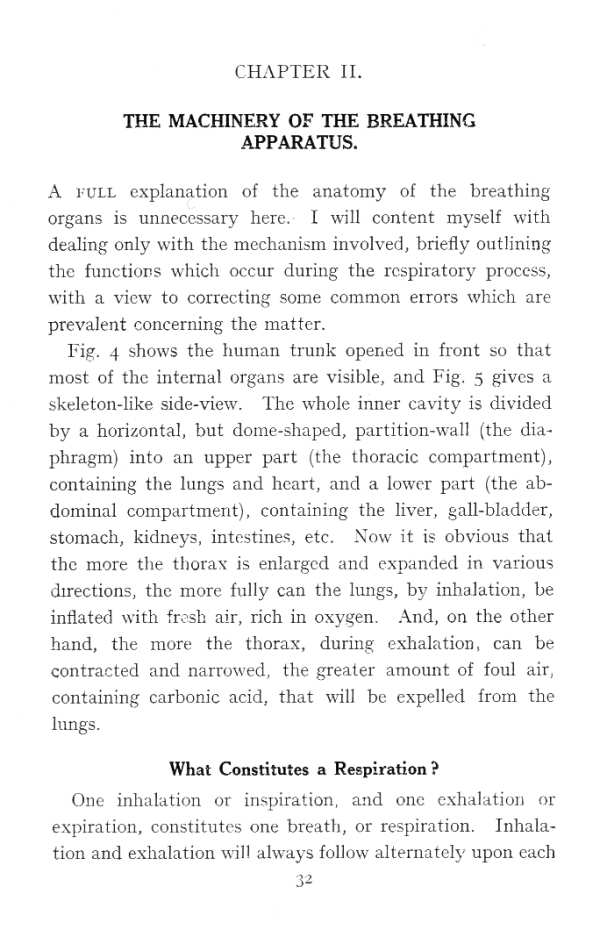mbs 032

CHAPTER II.
THE MACHINERY OF THE BREATHING APPARATUS.
A ruLL explanation of the anatomy of the breathing organs is unnecessary here. I will content myself with dealing only with the mechanism involved, briefly outlining the functions which occur during the respiratory proccss, with a vicw to correcting some common errors which are prevalent concerning the matter.
Fig. 4 shows the human trunk opened in front so that most of the internal organs are visible, and Fig. 5 givcs a skcleton-like side-view. The whole inner cavity is divided by a hori/.ontal, but dome-shaped, partition-wall (the dia-phragm) into an upper part (the thoracic compartment), containing the lungs and hcart, and a lower part (the ab-dominal compartment), containing the liver, gall-bladder, stornach, kidneys, intestines, etc. No w it is obvious that the morę the thoras is enlargcd and expanded in various directions, the morę fnlly can the lungs, by inhalation, be inflated with fresh air, rich in oxygen. And, on the other hand, the morę the thorax, during exhalation, can be contracted and narrowed, the greater amount of foul air, containing carbonic acid, that will be expelled from the lungs.
What Constitutes a Respiration ?
One inhalation or inspiration, and one exhalation or expiration, constitutes one breath, or respiration. Inhalation and exhalation will always follow altemately upon each
3-2
Wyszukiwarka
Podobne podstrony:
CHAPTER II 14 86230 CHAPTER II THE BACKGROUND 1• Introduction In our 1986 Report we expounded and
essent?rving?38 CHAPTER 13STYLIZING THE FIGURĘ Stylization is not an Easy Option The styli7x*d or si
Chapter II - ORGANIZATION 1. Factual information Name of the establishments: Wrocław Universitv of
CHAPTER II 17 86230 the econoay by public spending, whlch has not at the beglnnlng of a period a cor
CHAPTER II 18 86230 Inflatlonary praisurts In the occurrence of expanslve spells. This good lenie1
img1123 1 THE RAY OE THE PLANETARY LOGOSI. The Solar Ray of Love-Wisdo»i “Goci is Lovc" / / II.
O 50 100 ISO too *30 300 330 TOPOuC II OMM-CCNTIHCTCRS of t
New—Electronic Ignition Analyzer Kit—IA-1A i ii ✓ • A Fraction of the Cost of
Scannen0035 25 A7l/ — A A-Frame V {,«7> (24 WflSraft»<7>łfc9:£łwtttTV ii-)0 The form of a o
IMGR20 Chapter ThreeDRESSING THE SKINS [(bas noc pcevioajły been madę elear chat, in ia origins, che
więcej podobnych podstron